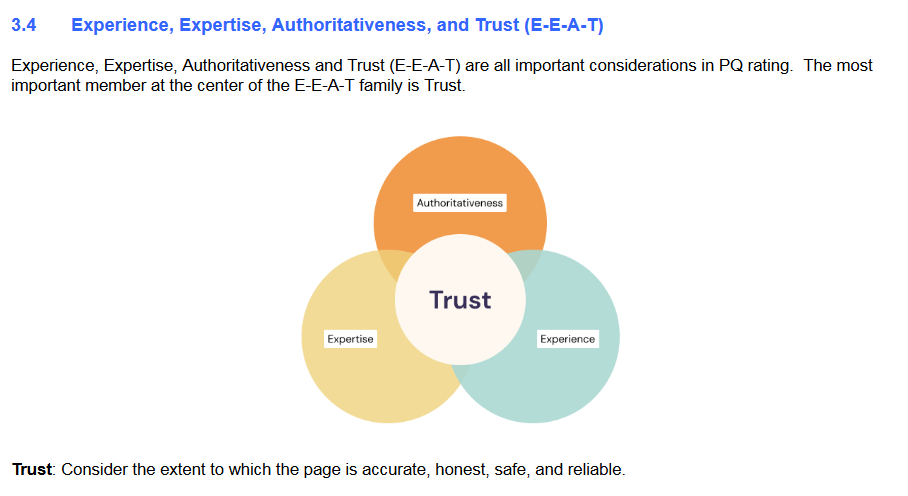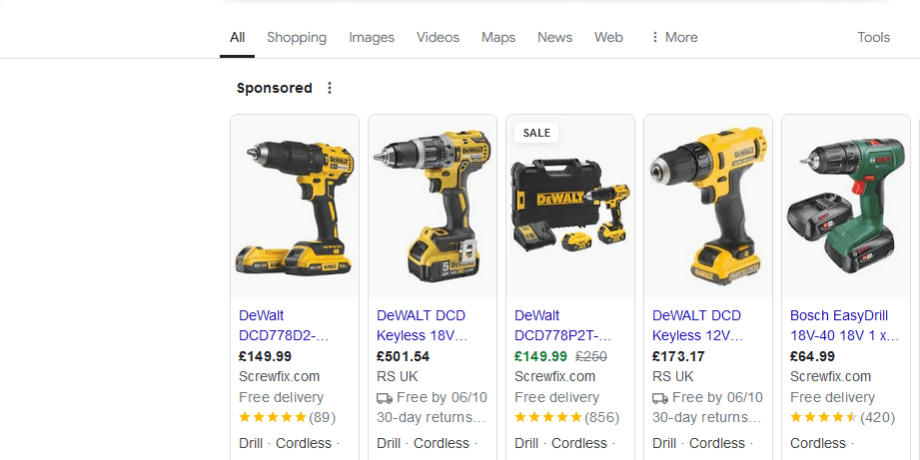Web design for SEO: How to build content that ranks highly on search engines – part 2
In the previous post we discussed what options you need to consider for initial web design. Once you have made your choices of CMS, web hosting etc you will hopefully have a draft website where the structure is defined.
At this stage your content is probably not finalised. You might know the main pages and headings but the final text, images and media is not complete. This can be the phase that makes or breaks your website in terms of its influence on users and ranking on search engines.
Content that meets Google’s E-A-T-T criteria for website design
Google’s algorithm for deciding where to rank a website in search results for a particular keyword is an automatic process.
Someone typing in keyword and searching Google, sparks off a series of events where Google searches its index and presents the user with a list of websites. These search results are usually augmented with paid search results, Google shopping results (often paid), local search results and snippets, knowledge cards and related questions.
Google needs to understand the content of your website so it can present your information accurately.
This is where the content of your website, its layout and other factors will be important.
Your website pages must be properly structured with text, images and other media that convey the correct message. The website pages must also be indexable by Google and other search engines so it can extract and understand the text and add it to its index.
What search engines review
Search engines will look at the following:
- Meta tags – title tags, description, alt tags of images etc.
- Page content – keywords used in the body content of the web page and other content.
- Headings and other layout features
- Internal links – relevant links to other parts of your website.
- Links to the page from other websites
- Bounce rate / dwell time – this is a controversial area, but in principle, once people navigate to your website they should stay. Bounce rate is a measure of the percentage of users leaving a page within 10 seconds.
However dwell time or bounce rate isn’t necessarily used as a ranking factor:
In fact, Google’s Gary Illyes said in a 2019 Reddit AMA that dwell time is “generally made up crap.” And that “search is much more simple than people think.”
The thing is: Lower dwell time doesn’t necessarily indicate lower content quality or user dissatisfaction.
Your users will generally only notice the content and whether it meets their needs.
Google’s E-A-T-T criteria
Google has a criteria called E-A-T-T that its human moderators use to assess the quality of search results.
If your website can demonstrate E-A-T-T then it will rank higher in search engines.
E-A-T (Expertise, Authoritativeness, Trustworthiness) has been a cornerstone of Google’s Search Quality Rater Guidelines for years. Recently, Google added a new “E” to the mix – Experience.

Image from Google E-A-T-T
Understanding and optimizing for E-E-A-T strongly correlates with SEO success.
It’s also defines good practice in creating your content so it’s useful to be aware of what is before you write your website content.
Users value content from those with first-hand knowledge and experience for virtually any topic. This could apply to product reviews, travel guides, technical tutorials, etc.
For example, if an author is writing an iPhone review, they should have used the product – or if they are writing about the best restaurants in San Francisco, they should have visited them.
Trust is the most critical component of E-E-A-T, Google says, “Because untrustworthy pages have low E-E-A-T no matter how Experienced, Expert, or Authoritative they may seem.”
Experience, expertise, and authoritativeness support a quality rater’s trust assessment.
If you’re following Google’s guidance regarding E-E-A-T up to this point, you’re well on your way to building the level of trust Google’s quality raters seek and creating website content that ranks well on search engines.
Get in touch with Dinesh on 07941 686113 or contact us if you need help on web design, web hosting, SEO services or domain names.
Further reading
Google E-E-A-T: What Is It & How To Demonstrate It For SEO
Google’s Search Quality Raters Guidelines: A Guide for SEO Beginners
The Layout of Google Search Results Explained







